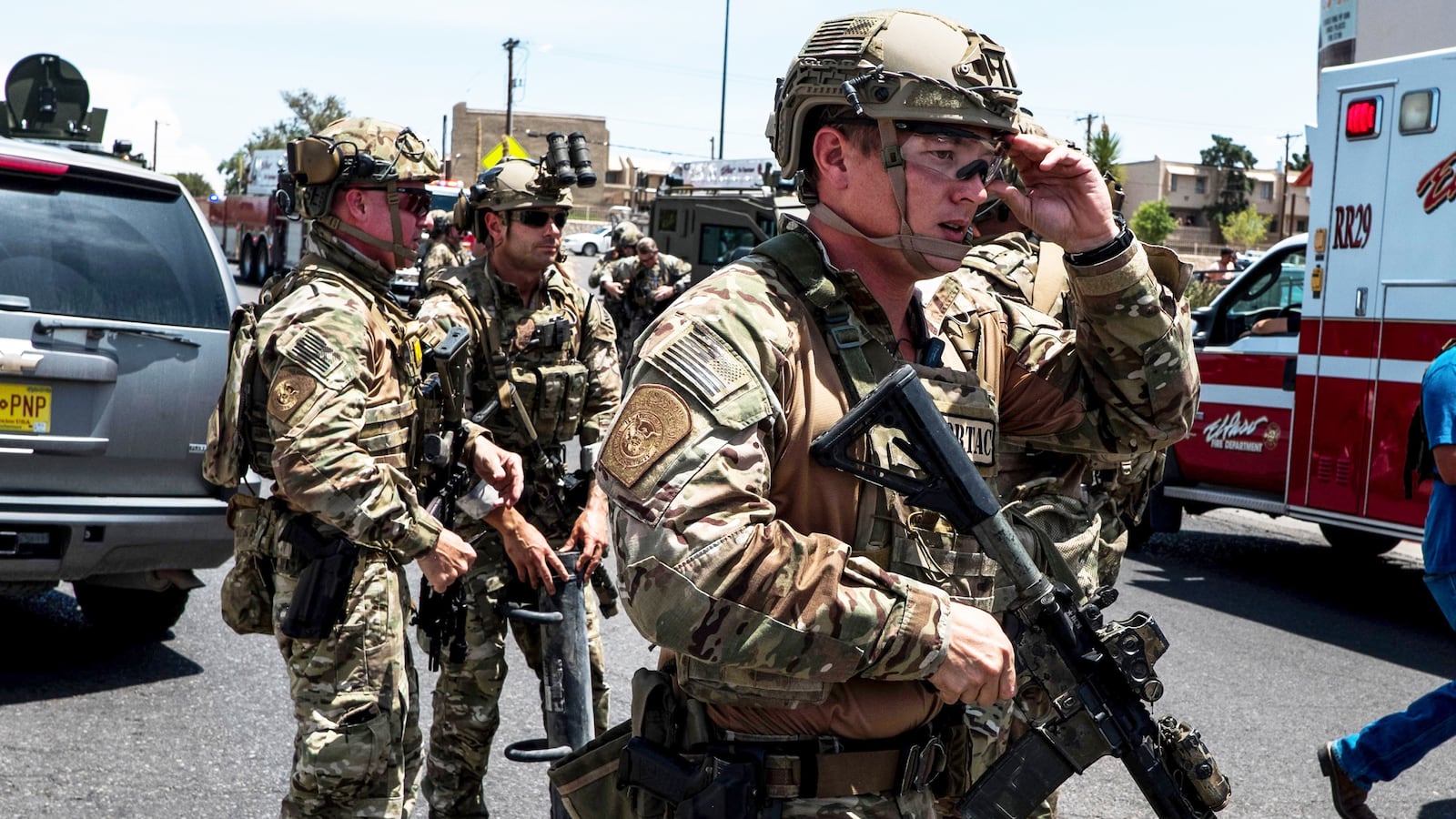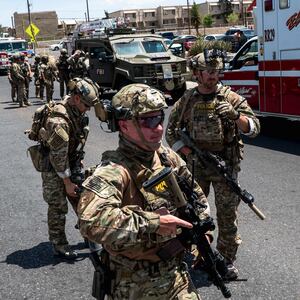It’s the meme behind the massacres.
In El Paso this weekend and across the globe this year, white supremacists have left manifestos referencing a racist conspiracy theory to justify slaughtering religious and ethnic minorities.
Alleged killers in Christchurch, New Zealand; Poway, California; and El Paso, Texas believed a theory that claims white people are being “replaced” by people of color through mass immigration. Conspiracy theorists often falsely claim this is a deliberate effort by any number of groups demonized on the far right: liberals, Democrats, Jews, Muslims. It’s the theory peddled by white-supremacist groups seeking recruits and the torch-bearing marchers in Charlottesville two years ago. It’s also a thinly disguised—and often not disguised—talking point from some conservative politicians and pundits, experts say.
By leaving these conspiratorial manifestos, white supremacists are trying to add to a long and growing library of terror, and get others to follow their examples.
“They’re also trying to inspire others about the urgency of the moment. In particular with the New Zealand shooter, the Poway shooter, and this guy in El Paso, you see these ideas building on each other,” Heidi Beirich, director of the Southern Poverty Law Center’s Intelligence Project, told The Daily Beast.
“There’s no question these people are feeding off each other because they’re referencing prior manifestos. In the Poway case and the El Paso case, they both referenced Christchurch.”
In name alone, the conspiracy theory began in 2011, with the book The Great Replacement by French author Renaud Camus. The anti-Muslim, anti-immigrant text likened the growth of non-white populations to the genocide of white people in European countries. This supposed genocide is nonexistent. White supremacists use it as an excuse for violence anyway.
On Aug. 11, 2017, white supremacists led a torch-lit march on the University of Virginia campus in Charlottesville. The marchers chanted “You will not replace us,” or sometimes “Jews will not replace us,” in a callout to the conspiracy theory.
The gathering, the first event of the two-day “Unite the Right Rally,” was intended as a coming-out moment for America’s increasingly visible white-supremacist movement. On the second day, a neo-Nazi drove a car into a crowd of anti-racist protesters, murdering one.
The conspiracy theory continued to gain traction with white supremacists. The Christchurch shooter referred to the “replacement” in the title of his manifesto before he allegedly massacred 51 people at a mosque in March—and live-streamed it on Facebook for propaganda.
White supremacists online glorified the Christchurch attack. The alleged shooter at a Poway synagogue in April cited the Christchurch manifesto as his motivation for murdering Jews. The alleged shooter at a Walmart in El Paso on Saturday also cited the Christchurch tract as inspiring him to murder Hispanic people.
Clint Watts, a former FBI agent and current distinguished research fellow at the Foreign Policy Research Institute, said the alleged attackers were mobilizing each other.
“They all cite each other,” Watts told The Daily Beast. “Yesterday’s El Paso shooter cited Christchurch. Then he talked about how a month ago, he started to think about an attack. That’s really a short time, which makes it even more impossible for law enforcement to get in front of it.
Watts likened the attacks to terror campaigns by organized groups like ISIS, which touched off a series of attacks across the world in the summer of 2016, with new violence inspiring new violence.
“Because of those successful attacks, you’d see a wave of inspired attacks, meaning that there are often one, two, three people already thinking about doing an attack,” Watts said. When those people see a violent incident, “they mobilize because they want to get into the media storm. They want to be part of that phenomenon. It becomes a contagion.”
ISIS terror and white-supremacist terror both require a wide network of online extremists potentially ready to commit violence for the cause. The difference with the current wave of white-supremacist violence, Watts said, is that white supremacists are decentralized and do their organizing through a leaderless online movement, rather than following orders from recognized leaders.
Media treatment of ISIS and white-supremacist violence are also different, Watts noted. “What’s remarkable is that our response [to white violence] is just, ‘Eh, this guy is a bad apple; he’s crazy,” he said.
Sometimes, the white-supremacist rhetoric actually comes from conservative media and politicians, SPLC’s Beirich said.
These figures are “not always using the term ‘Great Replacement,’” she said, but “even from Trump and others, there’s a lot of talk about Latinos ‘invading’ the United States, about the idea that Democrats like immigrants because they’re going to vote for the Democratic Party, the idea—which we’ve heard from Trump, Tucker Carlson, and others—that white people are basically being pushed out of their areas by these new populations.”
Trump on Twitter has repeatedly described Hispanic immigrants as “invading” the U.S.—the same terminology the alleged El Paso shooter used—and in a campaign speech last year said migration from Central America was “like a war” on America. (Trump condemned white supremacy in an address Monday from the White House.)
Rep. Steve King (R-IA) has gone further, promoting explicit white nationalists and writing that “we can’t restore our civilization with somebody else’s babies” in a tweet defending a racist Dutch politician’s stance on “demographics.”
Fox New personalities have also invoked similar terms, with pundit Laura Ingraham recently claiming that Democrats support “replacing the current American population, or swamping the current American population, with a new population of people.”
The line could have belonged in one of the emerging manifestos, according to Beirich.
“They’re not calling it ‘white genocide,’ per se, but it’s the same idea,” she said.









